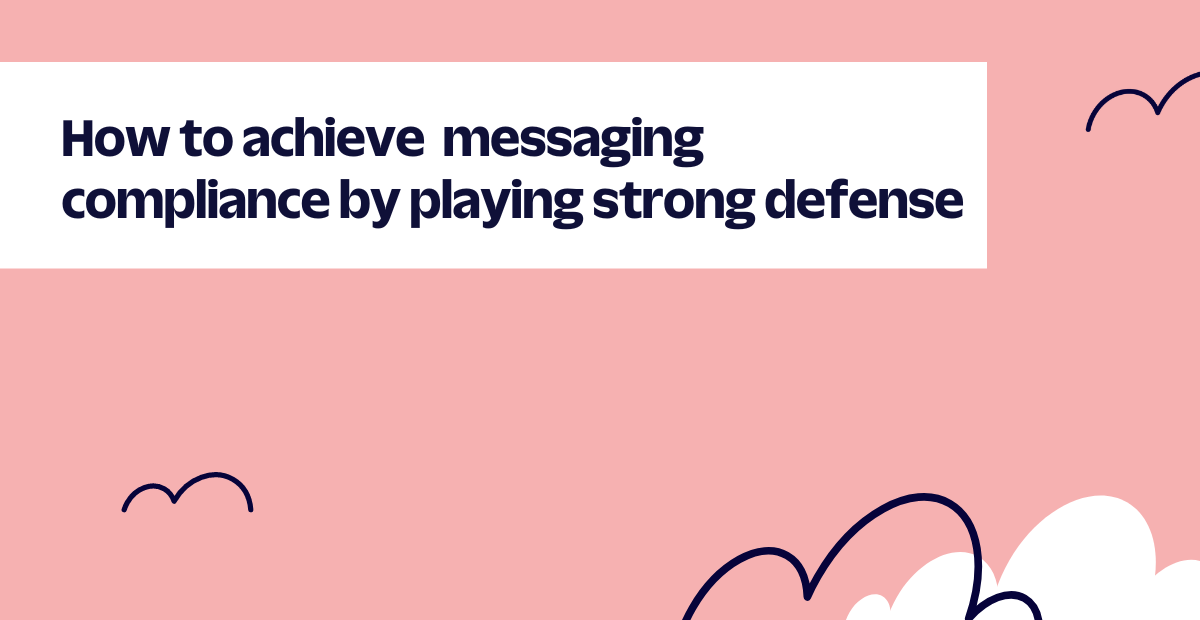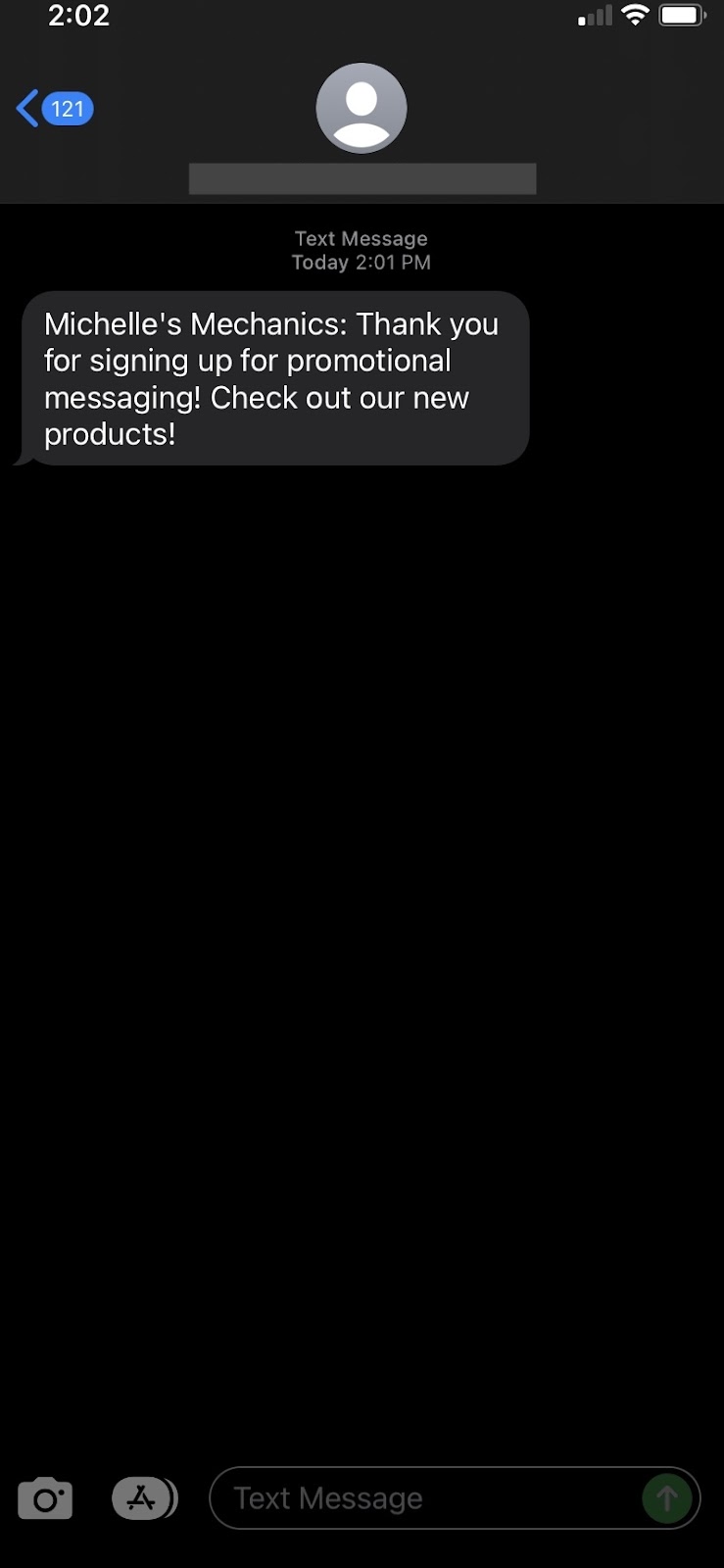How to Achieve Messaging Compliance by Playing Strong Defense
Time to read:
This post is part of Twilio’s archive and may contain outdated information. We’re always building something new, so be sure to check out our latest posts for the most up-to-date insights.

In messaging compliance, it is important to remember that you are always playing defense. Setting up a compliant messaging program from the start will make sure that you don’t get dinged by the carriers in the long term.
Filtering is often, though not always, driven by how customers are receiving (or not receiving) messages. If a sender is trying to message a lot of numbers that are landlines because they do not have a clear opt-in flow, the carriers will be more likely to filter. If customers are opt-ing out or marking as spam at high rates, carriers, again, will be more likely to filter. If your method of collecting consent is clean, content is wanted, and sender identification is clear, the likelihood of filtering is low.
In this article, I will provide recommendations to help you set up a good defensive line from the start with these messaging compliance practices.
Consent
The majority of spam complaints from message recipients come from SMS programs that do not have a clear opt-in flow. To make sure your SMS program doesn’t fall into a similar trap, we recommend the following guidelines when building your program. While implementing these guidelines may not be easy up front, they are the best way to defend against problems long term.
- Consent can’t be bought, sold, or exchanged.
- Keep a record of how and when recipients consent.
- Remember that consent only applies to the specific use case for which you collected a phone number.
- Make sure it is clear to recipients that they will be receiving messages by providing their phone number.
- Make the frequency of messages clear when recipients provide their phone number.
- Send the first message within a reasonable period after receiving consent.
- Remind recipients of opt-out options monthly. For example, include "Text STOP to stop" at least once per month.
If you follow the behaviors above, you are likely to minimize error rates, opt-out rates, and spam complaints. Understanding that each industry is different, consider how these behaviors can fit into your specific SMS program.
Sender Identification
Setting up consistent sender identification is a really straightforward way to keep down filtering. If the customer understands who exactly is texting them and why, they will be a lot less likely to report the messages as spam or opt-out.
Every message must clearly identify you as the sender, except in follow-up messages of an ongoing conversation. For example, “Michelle’s Mechanics” is the sender in the image below.

Content
Every marketer will tell you that their messages are the exception and are universally wanted. While that might be the case for your brand specifically, filtered content falls into two categories: unwanted and illegal.
Unwanted messages
Unwanted as a category is up to the recipient to decide.
Here’s a personal example: I am a notorious fan of the best pro football team in the US and would sign up for their messaging in a heartbeat. Let’s imagine though that I accidentally signed up for messaging campaigns from their rival. If the rival team’s campaigns send me messages as if I'm their biggest fan, I might get frustrated and mark them as spam or unsubscribe quickly. The frequency I'd love from my team, is not the frequency I'd love from the imposter… ahem, I mean rival. All this to say, always send as if the recipient isn’t your biggest fan so as not to put them in a position where they need to be all or nothing. Who knows, maybe the subtle messaging from the rival team will turn my allegiance? Unlikely... but you catch my drift.
Illegal messages
Illegal as a category is more clear cut. Below are some guidelines to make sure you don’t send illegal messages:
- Don’t send messages regarding things or activities that are not federally legal in the country to which you are sending (e.g., messages around cannabis and gambling within the United States)
- Don’t send messages on the following topics:
- Hate speech, harassment, exploitative, abusive, or any communications that originate from a hate group.
- Fraudulent messages.
- Malicious content, such as malware or viruses.
- Any content that is designed to intentionally evade filters.
- Set up proper age-gating for content that requires it. You can find more information on what content requires age-gating based on the country here.
Account Configuration
Account configurations by themselves don’t start or stop filtering. However if your main account contains many or all of your numbers and one starts to get filtered, all of your numbers may be subjected to filtering. It is difficult to determine which numbers and messaging programs are responsible for the inappropriate sending when there isn’t any differentiation. Therefore, we always recommend utilizing our subaccount functionality for different use cases (or customers if your organization is an ISV, or Independent Software Vendor).
- Utilize Subaccounts for different use cases (or customers if an ISV).
- Utilize Twilio’s Advanced Opt-Out functionality to maintain compliant keywords.
Opt-out
If you are building out an SMS program and don’t yet know what an opt-out is (the horror!), there is a lot more learning to be done outside of this short blog post. Below are the absolute necessities:
- Read about SMS messaging compliance.
- The initial message that you send to an individual needs to include the following language: “Reply STOP to unsubscribe,” or the equivalent using another standard opt-out keyword, such as
STOPALL,UNSUBSCRIBE,CANCEL,END, andQUIT. - If a recipient opts-out, you can send one final confirmation message.
Conclusion
Messaging programs only successfully avoid filtering when they are set up well. It requires some proactive defensive strategies that require a bit more effort at first. However, you and your team will be thankful many times over when your messages consistently get to your recipients. No one wants to be in a situation where they’re relying on a Hail Mary to win the game.
If your team would like assistance with any aspect of your messaging solution, Twilio Professional Services is here to help. Reach out to learn more about our offerings.
I can’t wait to see what you build!
Michelle Desien is a Senior Technical Onboarding Manager with Twilio’s NAMER Professional Services team, coaching customers on best practices, US compliance, and sending at scale internationally. She can be reached at mdesien [at] twilio.com.
Related Posts
Related Resources
Twilio Docs
From APIs to SDKs to sample apps
API reference documentation, SDKs, helper libraries, quickstarts, and tutorials for your language and platform.
Resource Center
The latest ebooks, industry reports, and webinars
Learn from customer engagement experts to improve your own communication.
Ahoy
Twilio's developer community hub
Best practices, code samples, and inspiration to build communications and digital engagement experiences.


